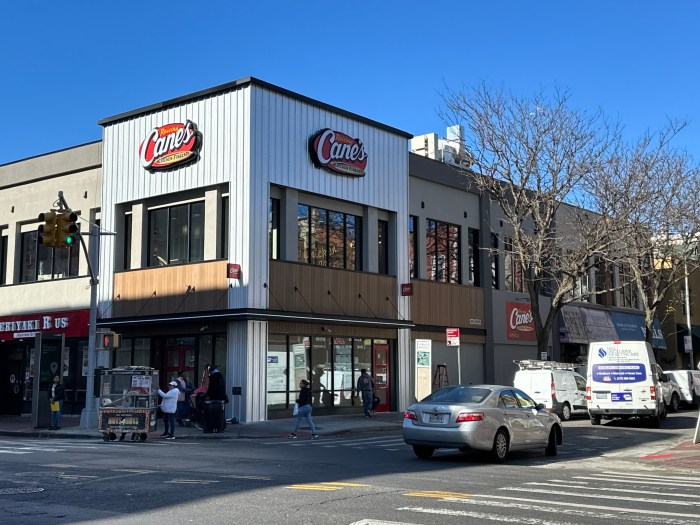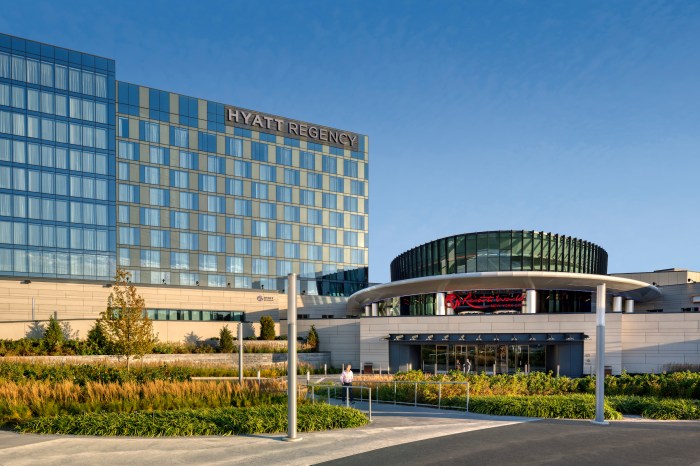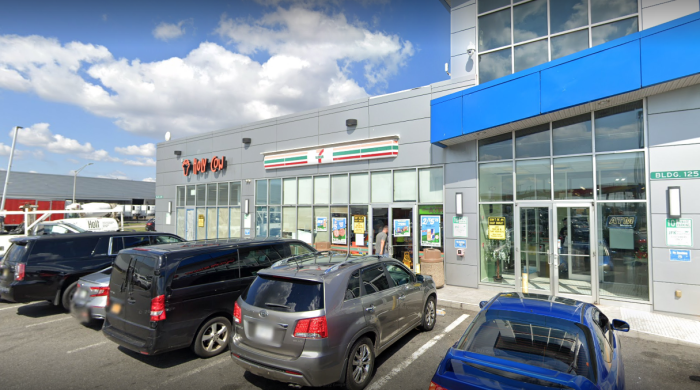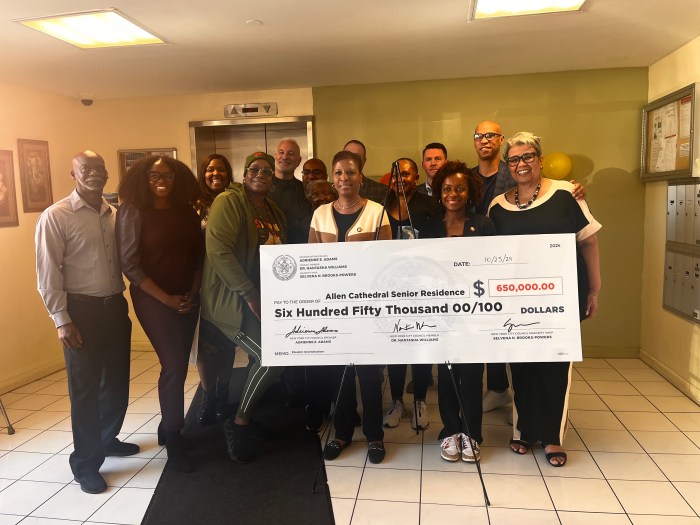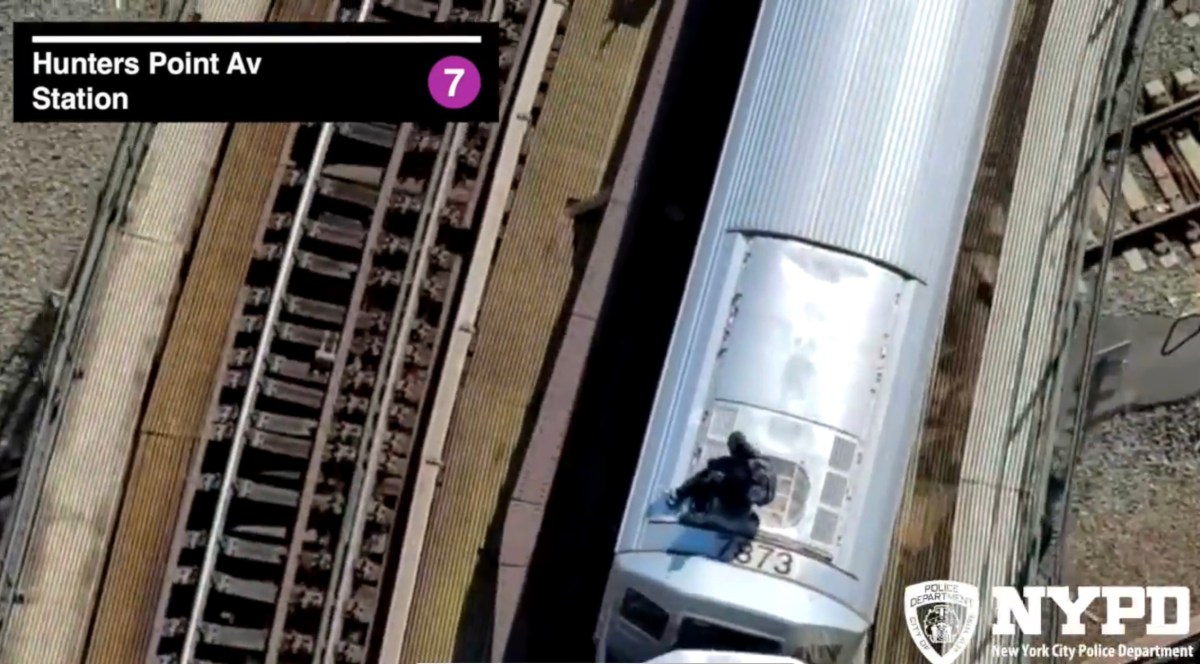Dozens of people gathered at Queens Public Library in Jamaica Wednesday evening for the MTA’s 2025-29 Capital Plan Open House, which aims to invest $68.4 billion across the subway, bus and commuter rail systems over the next five years.
Wednesday’s open house was the second event hosted by the MTA since the announcement of the five-year capital plan following an event at Grand Central Station last week.
The MTA set up a number of stations throughout QPL at Central on Wednesday, with each station consisting of informational posters, pamphlets and videos explaining different elements of the capital plan. An MTA employee was also on hand at each station to explain the finer details of the plan.
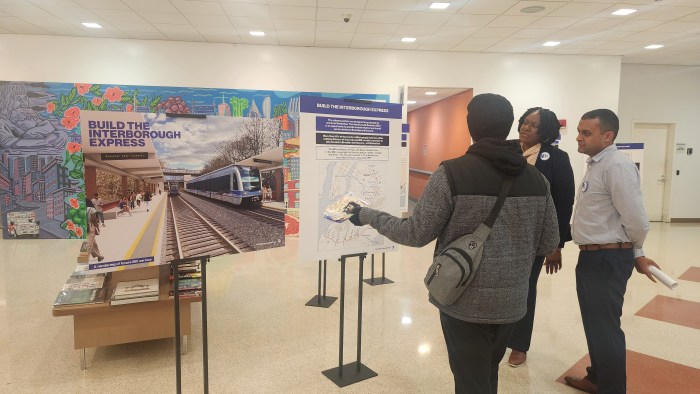
The 2025-29 Capital Plan, approved by the MTA Board in September, represents a significant increase on the $54.8 billion capital plan for 2020-2024 and calls for adding around 1,500 new cars across the subway and commuter rail systems in addition to making at least 60 subway stations and six commuter rail stations ADA-compliant. The plan additionally calls for significant investment in signal modernization and fare gates as well as $9 billion in critical structure repairs and $8 billion in station environment improvements.
MTA CEO Janno Lieber and three of the main divisional heads of the MTA, including New York City Transit President Demetrius Crichlow, Long Island Railroad President Rob Free and MTA Construction & Development President Jamie Torres-Springer all attended Wednesday’s open house to discuss the capital plan with residents and transit users.
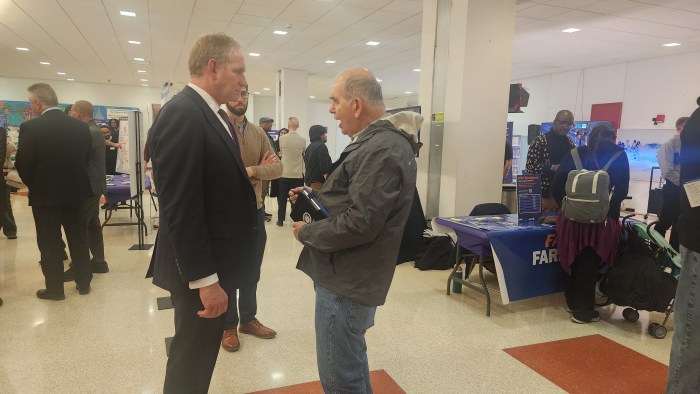
Crichlow said the MTA’s open houses help provide transparency to transit users across the city and also help explain the importance of several elements of the capital plan.
“I think the true value is in being upfront about what the actual program is investing in, so if we talk about… improvements in the signal system, generally, people don’t have an understanding of what that means,” Crichlow said.
State Sen. Leroy Comrie, who represents Southeast Queens and attended Wednesday’s open house, said the event helped provide transparency to members of the public.
“We [the New York State legislature] have been asking for transparency to make sure that the public is convinced that the MTA is spending their money wisely,” Comrie said Wednesday. “[Events like this] are critical to make sure that the public has a new version of the MTA. Unfortunately, they’ve been mired down in the 70s version.”
Questions still remain over how the 2025-29 capital will be funded. When the capital plan was first published in September, MTA officials said they could identify roughly half of the funding for the $68 billion project, including around $10 billion from MTA-issued bonds and around $21 billion from federal funding and state and city bonds. MTA Chief Financial Officer Kevin Willens said in September that there is a current funding gap of around $33 billion and that additional streams of revenue will have to be identified.
Although Gov. Kathy Hochul announced Thursday that she will lift her pause on congestion pricing starting January, the measure does not impact the 2025-29 capital plan. Congestion pricing was due to provide $15 billion in funding for the current 2020-24 capital plan before Hochul paused the toll earlier this year. Funding from the toll was responsible for roughly 27% of the current 2020-24 capital plan, with a number of projects on hold until the funding is restored.
Comrie said Wednesday that he is confident that the State Legislature will be able to “find a way” to make the capital plan happen.
“We’ve been able to find money before,” Comrie said. “In a $150 billion-plus budget, there are ways to move money.”
Comrie added that the five-year capital plan is critical to the long-term health of the city, stating that plan would ensure the MTA remains in a state of good repair.
Lieber is also confident that the capital plan will receive the necessary funding from Albany.
“There are strategies that people are working on that make that number (funding gap) much smaller, so we’re optimistic,” Lieber said. “We’re optimistic that the legislature and the governor in Albany are going to step up.”
Lieber also said Wednesday’s open house was an opportunity for the MTA to both provide members of the public with information about the capital plan and to solicit feedback about the details of the plan.
“The importance of accessibility is something that consistently ranks very high,” Lieber said, adding that a number of people have expressed support for new fare gates at subway stations across the city. “The infrastructure at our gates is antiquated relative to the way human beings behave. Right now, we need something that’s more modern.
“New Yorkers also get, broadly speaking, that maintaining the existing system is important,” he added. “We were concerned that not having a lot of new stuff, new lines, new systems, new stations, would be a downer, but people really want the existing system improved, maintained and brought up to grade.”
Attendees were generally satisfied with the capital plan, with several local residents and transit users impressed by plans for the Interborough Express, a proposed 14-mile light rail line connecting underserved parts of Queens and Brooklyn. The MTA’s capital plan outlines a $2.75 billion investment to fully design and complete preliminary engineering for the project.
Other attendees stated that they were impressed by the MTA’s plans to upgrade signals and improve efficiency along the Broadway N, Q, R, W line and the Rockaway A line.
Fanny Lin, a Flushing resident and 7 train rider, said Wednesday’s open house provided an opportunity to understand parts of the capital plan and described plans for the Interborough Express as a “game changer”.
“I take the MTA a lot, but I don’t realize what is being done,” Lin said. ” I think the Interborough Express will be a game changer, just because I live in Queens. So, to get to Brooklyn, it would help to not go through Manhattan.”
David Mordigal, a Jamaica resident who regularly uses the subway, said he is satisfied with the service on his line but said he is aware that the architecture of the subway system is often outdated.
“It’s important that they address a lot of the behind the scenes stuff, things like the power substations,” Mordigal said.
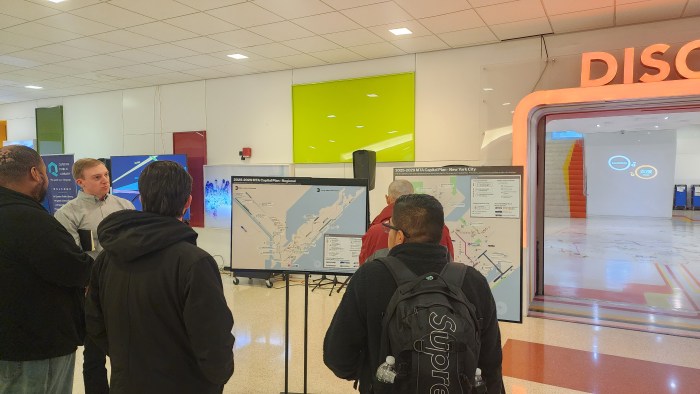
Dawan, a Jamaica resident who didn’t want to disclose his last name, said he was impressed by the details of the capital plan on display at QPL at Central on Wednesday evening.
“I think it’s important that we update our system, especially at a time when we’re getting a lot more people in our city, a lot more riders. And I feel like having a competent system would be good for the city, for our region,” Dawan said, adding that he was impressed by the capital plan’s proposals to address the subway’s substations and signal systems.
William Horowitz, a self-described “transit geek” living in eastern Queens, said Wednesday’s open house offered an opportunity for his voice to be heard, adding that he is satisfied with the plan overall. However, he also believes the MTA could be more efficient with how it spends its money.
“A lot of this stuff needs to get done,” Horowitz said. “There are projects that they’re not mentioning that I’d like to see happen, but it’s probably not going to happen until we get our finances in order.
“I’m not necessarily opposed to many of these issues or projects. All I ask is that you use your money smartly,” Horowitz added. “Overall, I like that they’re doing what they can with what they have.”


